Chasing the blues
Emory

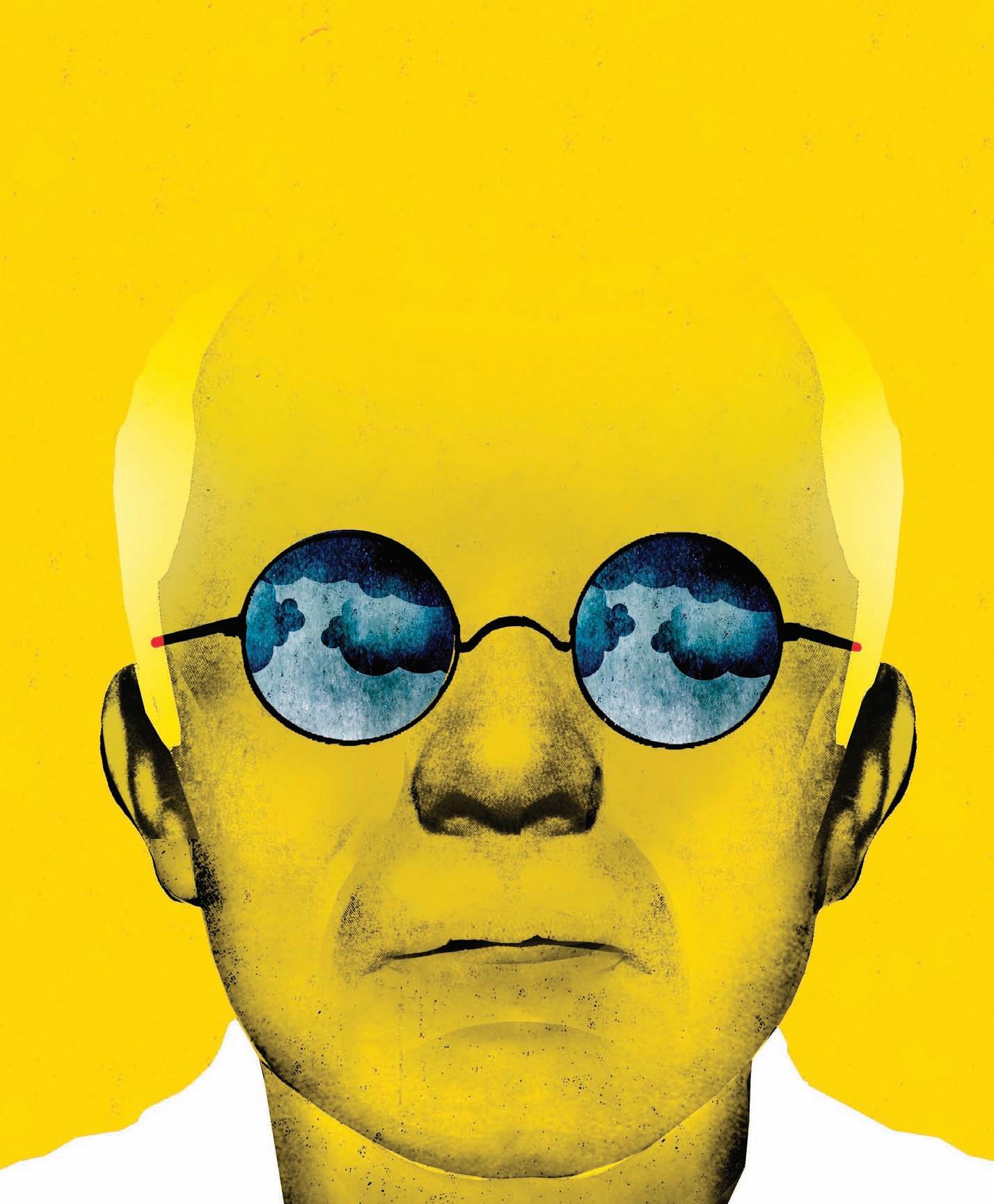
2








Sustaining Haiti 8 Diabetes interventions 14 Delivering nanotechnology packages 16 Summer 2010
is on a mission to change perceptions that depression is a normal part of aging
patient care, r esearch, and education from the Woodruff Healt H Science S c enter
A time of change
You may have read recently about changes that are under way within the leadership of the Woodruff Health Sciences Center (WHSC). Passage of the national health reform act makes this an opportune time to advance health care innovation, and I am stepping down as CEO of WHSC effective September 1 to dedicate my efforts to coordinating and expanding Emory’s studies on health care cost, quality, and access. I am excited to pursue my longstanding interests in improving the delivery of personalized health care and look forward to continuing to be a part of the dynamic energy of the WHSC as a member of the School of Medicine and Rollins School of Public Health faculties.
Emory Health
ceo, Woodruff h ealth Sciences c enter Fred Sanfilippo, MD, PhD
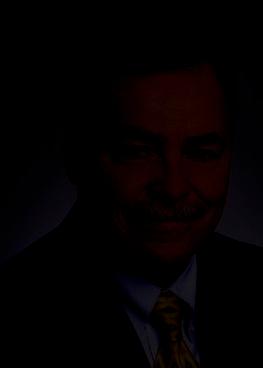
e ditor
Rhonda Mullen
Art Director
Peta Westmaas
Graphic Designer
Ivey Milton
Director of Photography
Jack Kearse
Production m anager
Carol Pinto
Web Specialist
Wendy Darling
e xecutive Director, h ealth Sciences Publications
Karon Schindler
Associate v ice President, h ealth Sciences
c ommunications
Jeffrey Molter

Emory Health is published quarterly for Emory neighbors and the community as well as faculty, staff, affiliates, and friends of the Woodruff Health Sciences Center of Emory University. Produced by the Health Sciences Communications Office, the magazine is made possible by support from the Robert W. Woodruff Health Sciences Center Fund.
Send all correspondence to Emory Health, 1440 Clifton Road, Suite 150M, Atlanta, GA 30322; call 404-727-8166; or e-mail rhonda.mullen@emory.edu.
To see extra multimedia features online, visit emoryhealthmagazine.emory.edu.
Together over the past three years, we have achieved important strides toward our goal of becoming a model health sciences and services center. We have centralized our comprehensive research programs under the leadership of Vice President for Research David Stephens. New comprehensive centers in areas such as comprehensive informatics, critical care, aging, and palliative care—led by new leaders recruited to Emory as well as emerging leaders from within our own ranks—have significantly enhanced our ability to deliver high-quality, cuttingedge care to the people who depend on us. Our cancer center has become the only NCI-designated center in Georgia, thanks to the extraordinary work of its excellent faculty and staff. The Nell Hodgson Woodruff School of Nursing has dramatically expanded its teaching and research programs under our new dean, Linda McCauley. And our long-time partnerships with Children’s Healthcare of Atlanta, Georgia Tech, and Grady have expanded to new levels of collaboration.
It has been a privilege to serve as CEO of the WHSC and to work alongside a profoundly talented and dedicated group of people.
Of course, these represent just a very few of the many accomplishments that leaders throughout the WHSC have achieved over the past few years, and I know that this extraordinary momentum will continue under the leadership of Wright Caughman, who will assume the interim CEO’s role in September. A gifted clinician, a highly respected leader, and a 20-year Emory veteran, he will help to lead the WHSC to even greater achievements.
It has been a privilege to serve as CEO of the WHSC and to work alongside a profoundly talented and dedicated group of people. Please know that, even in this time of transition, one thing will remain constant: our commitment to transforming health and healing … together.
Please share your feedback at evphafeedback@emory.edu.
From the e xecutive vP
A change in perception 2
Many people believe that depression is a normal part of aging. Emory psychiatrists know that it is not.
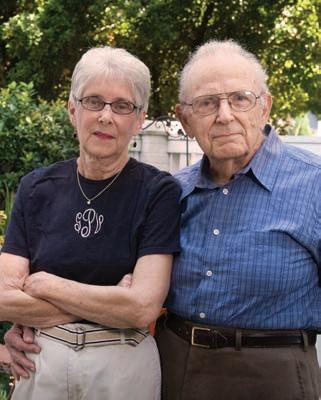
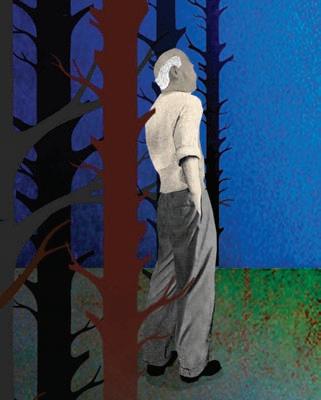
Haiti’s fair share 8
What Emory medical students and faculty are doing to build health care infrastructure for the poorest country in the West.

Apres le jour 12
Before and after the day of the earthquake, the Hope Haven Orphanage has rescued some of Haiti’s sickest children.
Food plight 14

Diet is just one of the things we could change to prevent the worldwide swell of diabetes.
Special delivery 16
To understand nanotechnology, think big: a truck delivering packages to a specific address in the body.
Clinical care 18
Fixing jaws with 3D. Individual cancer treatment with radiosurgery. A chaplain’s journey with transplant patients. Attacking cardiac fat and blogging for hearts. Catching Alzheimer’s before symptoms appear.
Moving forward 22
Understanding environmental risks to health in China and Thailand. Greening health care in the United States. Preventing cancer through diet. Horticultural therapy for older patients. Why vitamin D is especially important for minority children.




Out of the woods 26
Emory psychiatrist William McDonald discusses how to find and treat depression in elderly patients.
What do you think? Emory Health welcomes your comments—pro or con—about topics and issues covered in this magazine. Please send comments, letters to the editor, address changes, and other correspondence to Emory Health, 1440 Clifton Road, 150M, Atlanta, GA 30322; email rhonda.mullen@emory.edu; or call 404-727-8166.
Visit us online at emoryhealthmagazine.emory.edu or our health consumer site at emoryhealthcare.org 24 12
i n thi S i SS ue
Volume 3, No. 3 2 8
“One earthquake victim told her: ‘We lost the lining from our already empty pockets. Nothing is left to take but our soul.’”
26
patient care, r esearch, and education from the Woodruff Healt H Science S c enter

F e Ature Ch ASING the blue S
A chAnge of perception
Depression hits the elderly often —one in four people over 65—and it hits them especially hard. Many times, they don’t realize what’s wrong. Affected people, their families, caregivers, even health professionals, may wrongly attribute symptoms of depression to memory problems or to aging itself.
e mory’s Fuqua Center for l ate-l ife
Depression is on a mission to change the perception that depression is a normal part of aging. It’s not. t he center helps older patients with depression get the diagnosis and treatment that can vastly improve quality of life and independence.
3 Summer 2010
b y Sylvia Wrobel • Illustration by Brian Stauffer
Jack Pennybacker experienced intermittent bad moods throughout his life, but in his mid-60s, these moods suddenly turned black. his general practitioner prescribed a popular antidepressant.
A year later, Gretchen Pennybacker noticed signs that her once brilliant husband’s memory was slipping. A popular loyola university mass communications professor, Jack retired, thinking it would help. It didn’t. these were supposed to be the golden years. they weren’t. Dealing with Jack’s worsening memory, irritability, and withdrawal, Gretchen sold their house in New Orleans and moved to Atlanta where family could help her with what clearly lay ahead.


the move to a townhouse in a strange city further disoriented Jack and required an exhausting vigilance of Gretchen. She didn’t know where to turn. When she described her predicament to the director of a nearby life-enrichment services program for older people, the director handed her the telephone number for emory’s Fuqua Center for l ate-life Depression. the center sent a bus to take Jack to emory’s Wesley Woods campus, where a geriatric psychiatrist and gerontologist worked to understand his various medical conditions.
like many seniors, Pennybacker had accumulated a personal


pharmacy, including drugs for cholesterol, congestive heart failure, and cardiac arrhythmia. he was so overmedicated that he fell asleep during his exam. Medicines for depression and dementia were adjusted. Drugs with the most potential for side effects, beta-blockers and bloodthinners, were no longer needed once surgical ablation resolved his arrhythmia. A continuous positive air pressure face mask addressed previously undiagnosed sleep apnea, which his new doctors believed had caused him to be sleep deprived for years, possibly contributing to depression and memory loss. his wife no longer had to sleep in another room because of his restlessness.
For several weeks, Pennybacker also attended a daily support group, which the former professor referred to as his seminar. For the past five years, however, the Pennybackers have returned to the


4 emory he A lth FeAture C h ASING the b lue S
Left: Jack and Gretchen Pennybacker found relief and treatment for Jack’s depression at the Fuqua Center. Below: Psychiatrist William McDonald wants to spread the word that depression is a treatable disease while nurse practitioner Eve Byrd works to expand community awareness of its effects.
Emory clinical nurse specialist Sherry Dey frequently visits with patients in their homes to evaluate them for symptoms of depression.
Fuqua Center only once every six months to see a psychiatric clinical nurse specialist.
Gretchen Pennybacker knows that Jack’s dementia cannot be fixed, only slowed. She increasingly serves as her 80-year-old husband’s memory; his beloved crossword puzzle books are increasingly made up of words he learned years ago, his amiable jokes not always quite on target. but even if Alzheimer’s is relentless, treating Jack’s depression has given the couple back years of a fuller, gentler life filled with grandchildren, restaurants, the symphony, and theater. She has been given, she says, more time with the Jack she used to know.
TreaT ing TH e common col D of p S yc H iaT ry unfortunately, the Pennybackers’ story is not unusual. b ecause severe depression affects so many people—one in 10 Americans each year, of all ages, races, ethnicities, and socio-economic backgrounds—it is sometimes called the common cold of psychiatry. Common it may be, but the nickname doesn’t do justice to the pain suffered by patients and the bewilderment and hurt their withdrawal and irritability causes family and friends.
Risk rises with age and, markedly, with loss of function, hospitalization, or the need for health care services at home. Additional risks for late-onset depression (in which depression appears for the first time in old age) include widowhood, physical illness, an education level less than high school completion, and heavy alcohol consumption. half of younger people who experience an episode of major depression never have a recurrence. however, in older people, the chance of relapse is 80%.
In the elderly, depression may exacerbate and interfere with treatment of diseases with which it commonly co-exists, including Alzheimer’s (about 30% of these patients are depressed), Parkinson’s (about 40% of these patients are depressed), stroke, heart disease, cancer, and hormonal disorders.
but, and this is what keeps McDonald up at night, to achieve these results, depression in the elderly must be treated adequately and it can be treated only if it is recognized.
too often it isn’t. Depression in the elderly can look a lot different from the way it does in a college student, the mother of a newborn, or a 45-year-old man, all of whom are likely to be overcome by great sadness, to weep, to focus on feelings of worthlessness. Older persons with depression often say that they feel no sadness whatsoever. Instead, they demonstrate apathy; lack of interest, enjoyment, or motivation; withdrawal; in some instances a dementia that can verge on catatonia. these symptoms, especially when unaccompanied by sadness, may be wrongly assumed, even by clinicians and social services professionals, to be completely explained by other diseases, especially those involving memory and cognition, or to be a normal part of aging.
to further complicate things, some older people don’t have words to describe, or don’t like to admit, what they are experiencing. Or frequently, they think what they are experiencing is a normal part of aging. they may feel guilty or ashamed. Geriatric psychiatrists like McDonald are often in the strange position of having to persuade patients that they actually have a biologic disease for which effective treatments are available.
r eac H ing ou T T o TH e communi T y
For evelyn Ramirez, the past six years have been the best. the 70 years before that, she says, were nothing but misery. As a young rural mail carrier in thomaston, Georgia, she sobbed furiously between stops. tranquilizers local clinicians offered didn’t do much. the first time she tasted alcohol, however, that sweet moment of relief, she knew she was on her way to full-blown alcoholism. She blames depression for the failure of her three marriages and for her previ-
For patients with F ading memory, li F ting the F og
Depression may, in fact, be the first clue that these diseases exist. It decreases the likelihood of independent living and increases the likelihood of homelessness. It is a major factor in the disproportionate number of suicides in people over 65, most strikingly in white men in their 80s.
o F depression o F ten can improve not only mood but also the ability to concentrate and F unction.
the good news, says McDonald—Fuqua Professor and chief of geriatric psychiatry at emory—is that depression is treatable, with or without co-existing conditions. In fact, when a person has a combination of depression and Alzheimer’s or Parkinson’s, depression is the most treatable of those conditions. Appropriate treatment can take people who feel hopeless and give them back old interests and pleasures. For those who have withdrawn, it can re-engage them with family and friends. For patients with fading memory, lifting the fog of depression often can improve not only mood but also the ability to concentrate and function.
ous poor relationships with her children. She tried to kill herself. She grew up depressed, lived her entire life depressed, and expected to die depressed.
Six years ago, however, shortly after moving into a one-room apartment in one of the government-supported, high-rise seniorliving towers in which the Fuqua Center provides outreach services, Ramirez attended a presentation on late-life depression by emory psychiatric clinical nurse specialist Sherry Dey. Call us if you want to talk, Dey told the group. Within days, Dey and McDonald were sitting on Ramirez’s couch. everything was about to change.
today, always smiling, with friends and a renewed relationship with children and grandchildren, Ramirez has become an advocate
5 Summer 2010
for recognition and treatment of depression, talking to medical students and other groups about her experiences.
Fuqua Center staff members offer a full continuum of geriatric psychiatry services not only at the Wesley Woods campus but also throughout the community. they cover 21 residential facilities for older adults, half of which are low-income facilities. For some patients, like Ramirez, these services can be life-changing, even life-saving.
“We were founded to be a community outreach and education
programs annually, tailored for nurses, social workers, and other health care specialties. It also provides continuing education to primary care physicians, who care for the great majority of the elderly. Another way the center helps is by coordinating a large listing of community resources across Georgia and four surrounding states. this continually updated referral network (www.fuquacenter.org/ ReferralNetwork) covers everything from psychiatric specialists and facilities to pastoral counselors.
Fuqua c enter staFF members oFFer a F ull continuum oF geriatric psychiatry services not only at the w esley w oods campus but also throughout the community. t hey cover 21 residential F acilities F or older adults, hal F o F which are low-income F acilities.
service aimed at improving community awareness about depression and improving access to services,” says Fuqua’s executive director and nurse practitioner eve byrd. She logs hundreds of hours and thousands of miles every month, developing and strengthening partnerships with organizations that serve older adults across Georgia. every year, Fuqua provides training for depression screening to more than 2,000 people. It conducts more than 100 educational
Where the center got its name
RaISED B y HIS GRanDPa REnt S O n a SMall tOB a CCO fa RM, J. B. f uqua latER WRO tE t H at HE WaS “PROO f tH at any OBS ta ClE C an BE Ov ERCOME I f y O u aRE
WIll InG t O ED uC at E y Ou RSElf an D WORk Ha RD.” His ticket off the farm was a homemade ham radio and Morse code learned from a mail-order leaflet. after a globehopping stint as a radio operator in the merchant marine, fuqua worked as an engineer in a radio station, then convinced three investors in augusta to fund his plan to build a radio station. It was the start of an extraordinary career in which he launched more than 40 companies and served in the Georgia State legislature.
But he seldom spoke of his biggest obstacle: a lifelong struggle with severe depression. treated with “everything that came along over the past 50 years,” he found electroconvulsive therapy to be “little short of a miracle.”
Cathy b erger, director of the Atlanta Regional Commission’s Area Agency on Aging, says the difference the Fuqua Center has made for Georgia’s older citizens has been nothing short of astounding. her own organization— which plans, coordinates, and implements programs to help keep people healthy, active, and in the community as long as possible—incorporated mental health as a major component of its work, mainly due to the Fuqua Center’s efforts.
“ the Fuqua Center has been enormously important in the training of thousands of people who work with the elderly and in connecting hundreds of age-related services to mental health resources,” b erger says, “but their biggest impact may well be the way in which they have brought depression and mental health issues in the elderly to the forefront in Georgia.”
fuqua recognized that depression in many older people went unrecognized and untreated because of poor access to geriatric psychiatry services and a lack of understanding about depression on the part of professionals and the general public. In 1999, to promote awareness of depression in the elderly and to suppress its stigma, he made a gift that established the fuqua Center for late-life Depression and various Emory chairs and programs to improve mental health in the elderly.
If you would like more information about the fuqua Center or to support its programs, contact Ellen Sacchi, senior director of development, at 404-712-4152, esacchi@ emory.edu.

6 emory he A lth F e Ature Ch ASING the blue S
J. B. fuqua
Geriatric psychiatrist adriana Hermida, who speaks fluent Spanish, accepts referrals of patients who can communicate only in the Spanish they learned as children. As adults, they may have spoken excellent English, even conducted personal and professional lives in English, but because of Alzheimer’s can no longer speak the language they learned as an adult.
A computer line away
tERESa Ex PERIE n CED HER fIRSt On SEt O f PS y CHI at RIC PROB l EMS I n HER MID-70 S. formerly cheerful and outgoing, teresa (not her real name) lost interest in everything, stopped talking, and withdrew into herself. Puzzled by the sudden onset and remembering what he had learned about late-onset depression in presentations by the fuqua Center, teresa’s local doctor sent her to Emory geriatric psychiatrist adriana Hermida (right).
By the time teresa’s frantic family arrived at Hermida’s atlanta clinic, hours away from their rural Georgia home, teresa was the textbook picture of profound depression that looks like dementia (pseudo-dementia). Hermida had seen this before. after a careful examination, and with permission from the family, she treated the silent, unresponsive woman with electroconvulsive therapy. “It was like turning a switch back on,” says Hermida. although teresa remembers nothing of her descent into severe depression and pseudo-dementia, her mood,
was an early adopter of telemedicine, a service that allows patients in outlying areas to access psychiatric services locally.
aFter a care F ul examination, and with permission F rom the F amily, she treated the silent, unresponsive woman with electroconvulsive therapy. “ i t was like turning a switch back on,” says a driana h ermida.
personality, and ability to think and remember everything else is back to normal. She now comes to her local doctor’s office every six to eight weeks to talk to Hermida via telemedicine.

If doctors, hospitals, nursing homes, and other individuals and facilities want a consultation on a specific patient, it’s only a computer line away. the fuqua Center
In her geriatric clinic at Wesley Woods, Hermida and other providers see about five telemedicine patients a week. She moves easily from an exam room with a patient to another with a video monitor, doing the same things in each: assessing symptoms, history, and medications and sending reports back to each patient’s primary care provider. at the telemedicine sending site, a nurse who has received training from fuqua staff conducts physical exams and helps with cognitive assessment (for example, having the patient draw a clock face, which the nurse holds up to the video camera).
It’s been two years now since teresa’s diagnosis, and she is fine. that makes Hermida happy—but it also makes her wonder how many other teresas are in nursing homes, their sudden late-life depression unrecognized or misdiagnosed as dementia.
Summer 2010 7
Emory’s partnership began in 2008 with the first medical trip of six Emory medical students and faculty to Haiti. Since then, Emory teams have grown in number, with 10 core faculty and 40 medical students traveling to Haiti several times a year to offer primary care clinics and surgical services.
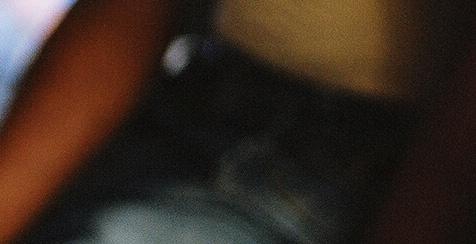


FeAture SuStAINING h OP e
Emory medical student Ira Leeds (left), who regularly volunteers in Haiti, has seen firsthand that the country’s health problems began long before the earthquake.
haiti’s fair share


What Emory Medishare is















doing to help build health care
infrastructure for the poorest country in the Western hemisphere
t he 65 -year-old man had been bed-bound with a catheter for 10 years. he felt less than a man, much less the head of his family. He had never been able to play with his grandchildren. Then a team of surgeons and medical students from Emory Medishare entered the picture. The man had the surgery that corrected his urologic problem, and he was returned to health and his rightful place in his family.
Emory Medishare is a branch of the nonprofit organization, Project Medishare, which advances community health and development in Haiti. Emory’s partnership began in 2008 with the first medical trip of six Emory medical students and faculty to Haiti. Since then, Emory teams have grown in number, with 10 core faculty and 40 medical students traveling to Haiti several times a year to offer primary care clinics and surgical services. Recently, they’ve added an OB/gyn arm and a research component to their efforts.
On the primary care trip each
November, Emory volunteers typically see 400 to 500 patients of all ages over the course of a week, treating prevalent diseases such as malaria, hypertension, skin infections, and gastrointestinal disorders. During a surgical trip each July, Emory surgeons perform procedures that are unavailable in Haiti—which has only one urologic surgeon for its 9 million people.

When the students see what can be done, when they experience stories like that of the grandfather, they are fired up, says Emory urologist Viraj Master, who has participated in the trips.

Summer 2010 9
b y Rhonda Mullen • Photography by Chris Lowell and Nick Vitone
C OO rdin A ting e FFO rt S
“One of the greatest pitfalls of our work is fragmentation,” says Ira Leeds, a second-year student who organized a surgical trip this summer. “We are there for a short, focused time, so in the grand scheme of things, what good does that do? What we are building toward is a synergistic whole, something that’s greater than the sum of the parts.”
The school’s collaboration with the parent organization is vital to sustaining any gains made in Haiti. For example,Emory’s team relies on Project Medishare to protect the expensive surgical equipment they leave behind so it will be available for the next visit.
Beyond that, “we’re not just parachuting in and then leaving,” Leeds says. “We’re building an infrastructure for the long-term.” For example the students have launched a capital campaign, Project Casse, to transform a dispensary into a fully functional year-round primary care center. In a second phase, the campaign will build a maternal health center to reduce maternal and infant mortality, and a third phase will build a physician’s residence to allow for 24-hour access to medical personnel.
tH e S itu A ti O n O n t H e gr O und
The efforts of Emory Medishare began before the earthquake and will continue after its impact has passed. “Haiti’s problems did not start with the earthquake,” says Leeds. “Haiti has been the target of 200 years of exploitation and neglect that have led to a country with grossly inadequate social services for good health and a decent quality of life. Even before the earthquake, one in five children in the central plateau there did not live to see their fifth birthday.”
The Emory teams work in one of the poorest areas in all of Haiti, in Thomonde in the central plateau. The population there is one of the most underserved in the world, with people lacking basic resources that Westerners often take for granted.
While Thomonde was not near the epicenter of the earthquake, immigration in the months after the quake has doubled its rural population.
The Emory surgical volunteers also work in nearby Hinche, a relatively urban town of 50,000, which pulls another 500,000 people from the surrounding area for specialized health care. While operating conditions are better in Hinche, they remain rudimentary by most standards.

On his first trip to Haiti, Master and his colleagues worked without electricity, relying on camping headlights when daylight started to fade. No electricity also meant that anesthesia requiring electronic delivery was out of the question. The surgeons instead relied on spinal anesthesia, working against the


emory he A lth 10
F e Ature S u S tAINING h OP e
Emory Medishare teams work in Haiti’s central plateau, where patients are among the most underserved in the world, with people lacking basic resources that many Westerners take for granted.
clock before it wore off in 2-1/2 hours. Equipment was a problem too. The students had raised enough money for travel and supplies, allocating funds carefully and bringing only enough suture lines to supplement what the local hospital could supply. However, when they arrived, they learned that there was no suturing material and were forced to adapt their procedures to use no more than three sutures per patient.
A Me ASured re SpOnSe
Leeds, who has participated in both the surgical and medical trips, says that Emory Medishare has made intentional efforts to better coordinate efforts in Haiti to have a bigger impact. One example is a research intervention that has both primary care and OB/gyn components, which the students will begin in November, to see if they can lower high blood pressure in pregnant women. Follow-up is planned for April 2011


Another project, funded by Emory’s Global Health Institute, is allowing students to study mental health in Haiti. “It gives us an opportunity to unpack what we’ve noticed on trips of an often undiagnosed and under-discussed issue of mild to moderate mood disorders in Haiti,” says Leeds. “For example, there is no word in Kreyol for depression. If we ask a potentially depressed person,


‘Are you sad?,’ they say, ‘No.’ If we ask what their day is like, they say, ‘I just sit around and do nothing.’ We suspect depression, but we have no clear way of diagnosing it in a foreign cultural context.” Students hope to be able to provide data and recommendations about how better to address the problem at the conclusion of the study.

Having a measured response is important to the Emory volunteers so they can find the best way to deliver health care to the Haitians. “How we help is important,” says Leeds. “The systemic underpinnings in the country, not the earthquake, created the current problems. The real way to rebuild is to put in place the infrastructure that wasn’t there.”
WEB CONNECTION To see the Emory team in action, visit whsc.emory.edu/r_haitivideo. html. To read student blogs from Haiti, visit emorymedishare.org.
For a good cause
Emory medical students are exploring every angle to raise funds for the capital campaign for Haiti, from traditional bake sales to auctions where faculty members have offered themselves for kayaking in North Georgia or hosting a badminton tournament. To make a donation to Project Casse, contact Ira Leeds at ileeds@emory.edu. The photos in this article are also on sale, with all of the proceeds benefiting Project Medishare. For more info, contact Jackson Fine Art at 404-233-3739 , jacksonfineart.com.
Summer 2010 11
In several trips each year, Emory Medishare teams of medical students and faculty bring surgical, primary care, and OB/gyn services that are otherwise unavailable in Haiti.
après le jour

Answering haiti’s call, before and after that day





Situated in Cap-Haitien, the Hope Haven Orphanage takes in Haiti’s medically fragile orphans, those who fall between the cracks, says founder twilla Haynes (second from top). She organizes volunteers (bottom right) for health care missions to Haiti several times a year.

emory he A lth 12 F e Ature hOP e’ S SAF e hAV e N
those are the words of nurse practitioner and alumna twilla haynes, who spoke at emory’s nursing diploma ceremony in May. her foundation, the hope haven Orphanage and eternal hope in haiti, coordinated a triage center in Caphaitien, haiti’s second largest city, where the united Nations relocated some 50,000 displaced people from the capital of Port-Au-Prince. haynes’s group scavenged for food, clothes, medications, and water for the earthquake victims and took in orphaned children from the street.
“Some children in Port-Au-Prince were thrust into buses traveling to Cap-haitien with only the clothes on their back,” she says. “No belongings. No family members. No experience traveling outside the home. Can you image a 10-year-old child dropped off at the Greyhound bus stations in Atlanta with no resources? these children had lost their families. they were grieving. they were in shock.”
the hope haven Orphanage took in the children and fed and clothed them. they got them in school. however, the emotional scars will mark the children forever, says haynes.
One earthquake victim told her: “We lost the lining from our already empty pockets. Nothing is left to take but our soul.”
Stret CH ing SHO rt ter M int O l O ng ter M Relief efforts poured into this devastating scene from around the world. People wanted to help. but how? A bigger question for haynes was how to connect these outpourings of the human spirit and short-term relief efforts into something that could be sustained for haiti’s future.
She has worked in haiti for 25 years. When she first went there as a faculty adviser, she remembers finding conditions that were hard to comprehend—“starvation, large crowds around water pumps, raw sewage in the streets, lights on only one to two hours a day.”
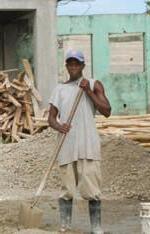
but the most unsettling sight was the children who were dying of preventable diseases. She believed that many of these could be saved through basic nursing care. “For the first time, I came to know the spirit of the suffering child,” she says, “quiet, courageous, accepting.”
to answer the quiet calls for help, haynes founded the hope haven Orphanage in 1996 for medically fragile orphans—the

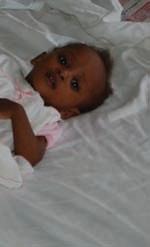

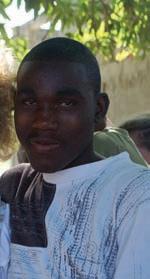
ones she had come to know as “the throwaways” of haiti. the orphanage opened in the isolated northeast to accept children with infectious diseases, tuberculosis, parasitic diarrhea, or pneumonia. Since that time, the staff has raised more than 100 children to adulthood, losing only two along the long way to AIDS they’ve saved children like Jeflit, who at five weighed 27 pounds and suffered from dilated cardiomyopathy. his abdomen was distended, and his arms and legs, stiff from sepsis, made him walk like a wooden soldier. With nursing care, Jeflit stabilized and eventually recovered, becoming the center of attention at hope haven with his beautiful smile and singing voice. Another hope haven orphan, Daniel, arrived at age 6. by the eighth grade, he had received the highest score on national standardized testing in Northeast haiti, and today, as a high school senior, he is president of his class.
emory nursing alum Cheron hardy now works full-time at hope haven and is mother to its 60 current residents. “the majority of the babies at hope haven today live,” haynes says, “because of the intensive intervention during their sickest hours made by emory student nurses like Cheron and others.”
C HA nneling g OO d W ill
In addition to the orphange, haynes has set up six community clinics in haiti that deliver primary care to a community of 7,000 people. her volunteers and staff have trained community leaders to care for parasitic diarrhea and pneumonia and encouraged mothers to get their children immunized. they’ve assisted three communities to gain access to safe water, reducing the number of orphaned sick children who enter hope haven by 70%. Since the earthquake, the patient load at these clinics has intensified, with new patients at these increasing by 30%
haynes and her foundation staff have their hands full sustaining the effort in haiti. “If you ever want to do anything for haiti, now’s the time,” she says. “We always need more nurses.” her advice to those who are interested in helping: “Volunteer for a week. Get your feet wet. Your contribution of a week lifts the spirits of those who are there day in and day out.”
In her many years of helping haitians, haynes has felt buoyed by the thirst of volunteers for this work. Close to 1,000 nursing students from across the united States and many from emory have come to offer their services and complete the clinical component of an international nursing course. “If we can channel that energy, it will be a mutual benefit for the nurses and their haitian patients,” haynes says.
And then she stops, smiles, and adds: “It’s amazing what love can do.”

Summer 2010 13
A
“As the United States has 9/11, the Haitians have the earthquake. They call it ‘après le jour,’ after the day.”
b y Rhonda Mullen • Photographs courtesy of Twilla Haynes
Food Plight


 b
b


can



to
healthier diet
VVenk A t n A r AyA n TRAINED AS A DOCTOR IN INDIA, BuT DuRING A RESIDENCy IN ENGLAND, HE BECAME SO INTERESTED IN PuBLIC HEALTH THAT HE SWITCHED GEARS INSTEAD OF PRACTICING CLINICAL MEDICINE, HE PuRSuED EPIDEMIOLOGy AT THE uNIVERSITy OF EDINBuRGH AND THEN AT ABERDEEN IN SCOTLAND, WHERE HE STAyED TO ACCEPT A FACuLTy POSITION
When the chance came to put his public health skills into action in a landmark NIH study of Pima Indians in Arizona, he accepted what he thought was a temporary assignment to set up the first lifestyle intervention for diabetes in the Pima. In the end, he never went back to Scotland, snagged by a growing interest in diabetes.
Narayan’s career has focused on better understanding diabetes in order to translate findings for prevention and control. He led diabetes epidemiology

at CDC for 10 years, where he was principal investigator of TRIAD, a diabetes quality-of-care study of 10 managed care plans and 12,500 participants. He was involved in a large number of national surveillance studies showing that type 2 diabetes was a growing problem in the general population, not just in the Pima.

emory he A lth 14 FeAture Out OF INDIA
changing
a
prevent diabetes in india? an emory researcher is studying risk factors there that have implications here.
y Rhonda Mullen
venkat narayan leads global research teams, trying to better understand diabetes to design more effective interventions.
Since he came to Emory three years ago—as the Hubert Professor of Global Health and Epidemiology at the Rollins School of Public Health—Narayan has been busy building a global network of diabetes researchers and continuing to participate in several multi-center studies on diabetes. “We have learned so much,” he says. “Still we are increasingly discovering how little we know.”
lA rge S tudie S A t l OW er COS t Worldwide some 220 million people have diabetes, with that number expected to double by 2030. More people die worldwide and in developing countries from cardiovascular disease and diabetes than from malaria, HIV, and tuberculosis combined.
In this country, which already spends $132 billion a year on diabetes, the lifetime risk of getting diabetes is 1 in 3 for whites and 1 in 2 for blacks and Hispanics.
Narayan’s studies have led him back to his native India. “The more you study things in the world, the more you come back to your own street,” he says. In addition, large diabetes studies can be done in India at lower cost than in the united States, with applicable data for addressing this problem worldwide.
Today, Narayan leads research at the Global Center of Excellence for Prevention and Control of Cardiometabolic Diseases in South Asia. Funded by $3.6 million from the National Heart, Lung, and Blood Institute, the center (one of nine worldwide) is studying the burden and risk factors for cardiovascular disease and diabetes in India and Pakistan. Emory is partnering with the Public Health Foundation of India on the grant.
The South Asia region includes three of the top 10 countries with the biggest populations of people with diabetes and the highest number of diabetesrelated deaths—India, Pakistan, and Bangladesh. Asian Indians are projected
to account for 40% to 60% of the global cardiovascular disease burden over the next 10 to 15 years.
The researchers’ first task is to establish three surveillance groups in Chennai, New Delhi, and Karachi. They will test 4,000 people in each of the cities for diabetes and heart disease and their risk factors, following them to see who develops diabetes and cardiovascular disease. They also are running a trial at eight sites in India with 1,200 people who have diabetes, half of whom will receive routine care, while the other half will get a structured care management program, using a combined strategy of a low-cost care coordinator and a decision-support system that monitors glucose, blood pressure, and lipids, includes a regular eye exam, and has a training component on decision-making.
Such a study would be too costly to conduct in the united States, says Narayan, who estimates a cost upwards of $200 million to do the same research here. But with lower costs in India and Pakistan and strong partnerships (the Madras Diabetes Research Foundation, the All India Institute of Medical Science, and the Aga Khan university), the research becomes feasible.
Furthermore, Narayan believes that what they are learning in India will have implications for diabetes in the united States. “We are clearly on the path to establishing that the epidemics of diabetes and cardiovascular disease are not just rich country diseases,” Narayan says. “But the resolutions to problems are pretty universal. What you learn in other countries is applicable here.”
WEB CONNECTION To hear Narayan discuss tracking and treating heart disease and diabetes in South Asia, see whsc.emory.edu/ soundscience/2009/narayan.html. To view a slide show on the Global Diabetes Research Center, see whsc.emory.edu/r_globald.html.
understanding diabetes in the united States
On the domestic front, Narayan participates in several research studies on diabetes, including:
n a National Heart, Lung, and Blood Institute study that is determining the best ways to decrease the high rate of heart attack and stroke in people with type 2 diabetes,
n research examining diabetes in children and youth, sponsored by the CDC and the National Institute of Diabetes and Digestive and Kidney Diseases, n the Diabetes Prevention Program, a clinical study to discover whether modest weight loss through dietary changes and increased physical activity or treatment with medication can prevent or delay the onset and complications of type 2 diabetes.
Basic facts
Diabetes is a disease with elevated blood glucose levels. People with the disease have difficulty converting food to energy.
In type 1 diabetes—usually diagnosed in children, teens, or young adults—the beta cells of the pancreas no longer make insulin because the body’s immune system attacks and destroys them.
type 2 diabetes (formerly known as adult-onset diabetes) is the most common form. It usually begins with insulin resistance, a condition in which fat, muscle, and liver cells fail to use insulin properly. Overweight and inactive people are likely to develop this type.
Women may also develop gestational diabetes late in pregnancy, which usually goes away after they give birth.
Summer 2010 15
Special Delivery

To understand nanotechnology, think big: a truck delivering packages of drugs to a specific address in the body.




in cancer detection, researchers inject nanoparticles tagged with fluorescent dyes and follow them through the body, the dyes acting like tracking numbers on a package to locate where cancer cells have accumulated. For cardiologists, nanoparticles offer the possibility of slowly releasing a minute package of anti-inflammatory drugs to the heart to soften the scars that usually appear after a heart attack. using nanotechnology, immunologists can design sophisticated vaccines to deliver substances that stimulate the immune system to specific sites in the body, while avoiding others that the drugs might harm.
Traveling light for cancer










In the joint department of biomedical engineering at Emory and Georgia Tech, Shuming Nie and colleagues are developing tools to help surgeons define the tumor margins of cancer in human patients. The particles consist of a polymer or gold base coupled to a fluorescent dye and protein that adheres to molecules on the surface of tumor cells. The gold in the particle greatly amplifies the signal from the fluorescent dye.

Nie and his team have shown that in rodents the particles can be used to detect tumors smaller than one millimeter. Now funded by a grant from the National Cancer Institute, they are working to move these tools closer to application in people with three especially deadly cancers: lung, pancreatic, and metastatic breast cancer.
using a small, handheld imaging device, surgeons will follow the nanoparticles in a cancer patient to see where they go. “This technology could allow the surgeon to directly visualize where the tumors are in real time,” Nie says. The technique could improve removal of the primary tumor and affected lymph nodes.
Emory surgeon Charles Staley says the extra information provided by nanoparticle
emory he A lth
F e Ature the PO te N t IA l OF PAR t IC le S
b y Quinn Eastman • Illustrations by Rich Lillash
imaging could be critical in planning a surgical approach. For example, some pancreatic cancers have presented such logistic challenges that they are inoperable. Nanotechnology puts another tool in the surgeon’s hand to make such procedures possible.
While cancer-fighting nanoparticles travel through the body

“For cancer detection, it’s best to have the nanoparticles small so they can go everywhere,” says Emory biomedical engineer Mike Davis. “In cardiology, we want our particles bigger, so they stay put but degrade over time.”
Nanoparticles developed by Davis and a colleague at Georgia Tech are between 10- and 20-millionths of a meter. By comparison, Nie’s cancer-seeking gold nanoparticles are 60 to 80 nanometers: hundreds of times smaller.
The cardiology polymer created by Davis’ group dissolves slowly in the body. In contrast with other biodegradable polymers, these polyketals break down into neutral, excretable components that do not cause inflammation. “We think polyketals have a lot of advantages,” Davis says. “you can make them fast- or slow-acting, and they offer sustained delivery inside cells.”



The cells that Davis and his team want to target are macrophages: inflammatory cells that appear in the heart after a heart attack and promote harmful scarring. Normally the macrophages attack bacteria and viruses, but they also have the ability to break down polyketals, smuggling the contents of the particles past cell membranes in the process.
This method of delivery allows scientists to duplicate the effects of injecting an anti-inflammatory drug into the heart twice a day over several weeks. Simultaneously, they avoid the toxicity that would result if the whole body were exposed to the drug. So far, the approach has worked in rodents.

Currently, the researchers are working to expand the reach of the polyketal technology to deliver a greater variety of payloads and reach different cell types. They are loading a tool for selectively blocking the activity of just one gene into polyketal particles. The next step is to merge polyketals and sugar molecules to deliver a package to cardiac muscle cells.
“With macrophages, the goal is to get them to back off,” Davis says. “With cardiac muscle cells, the drugs we’d want to deliver would instead be saying: ‘Hang in there, don’t die.’”
A nano-address for the immune system















Immunologists believe that mucosal vaccines could strengthen immune barriers at the surfaces of the mouth,

nose, or intestines, where the body often encounters bacteria and viruses. Emory immunologist Ifor Williams is particularly interested in designing mucosal vaccines that could be delivered orally or nasally.
Williams recently found that a protein, RANKL, may boost the effectiveness of mucosal vaccines. Specifically, treating mice with RANKL causes an increase in specialized M cells that act like conveyor belts to transport small particles in the intestine.
RANKL could have an unacceptable side effect if delivered throughout the body because it stimulates osteoclasts, or the cells that break down bone. Williams has teamed up with colleagues at Emory and Mercer to generate tiny capsules that contain RANKL to deliver the protein to the intestines. The advantage of this method is to deliver the protein only where it needs to go while blocking it from blood and bone.
In another Emory lab at the yerkes National Primate Research Center, Bali Pulendran’s team is imitating the structure of viruses to create immunity-enhancing particles that could strengthen several vaccines. Their approach grows out of work on the immune response to the yellow fever vaccine.
“We wanted to determine what makes this vaccine work so well, so that we can achieve a similar level of effectiveness with other vaccines,” Pulendran says. “Our aim was to create a synthetic particle that looks like the yellow fever virus: something with the same size that will stick around and activate the same parts of the innate immune system.”
So far, Pulendran’s team has found that, in mice, a nanoparticle can stimulate the immune system to produce antibodies for a long time. The next step: to test the particles’ potential for boosting vaccines against diseases such as pandemic flu, malaria, and dengue fever.
WEB CONNECTION To see videos on how nanotechnology is improving cancer treatment, visit whsc.emory.edu/r_nie.html.
Summer 2010 17
-
reflecting the inside out: a 3D approach to jaw surgery
The conventional method for oral and maxillofacial surgery requires taking numerous measurements of the jaw area and casting molds of the upper and lower teeth. The molds are positioned, repositioned, and measured, allowing the surgeon to calculate needed measurements. Essentially, the doctor runs through the surgery with the models before entering the operating room.
With the new technique, an optical scan of the teeth is merged with a CT scan of the head. The surgeon and biomedical technician view the images online and together use the software to perform surgery that allows them to accurately predict the surgical skeletal movements to correct jaw alignment. The computerized method allowed Roser to create a 3D simulation.
Rebecca Squires and amanda Bartelme are mirror-image identical twins. They appear to be exact reflections when facing each other.

Beyond looking alike, the sisters, 32, also share a misalignment of the jaws and severe underbites that have become more troublesome as they’ve gotten older. Five years of braces failed to fix the misalignment, and they became used to jaw pain, the inability to eat certain foods, and some difficulty enunciating.
When the twins both ended up in the Atlanta area after college, they decided to look into surgical options for correcting the misalignment. Their search led them to Emory oral surgeon Steven Roser.
The timing felt right, says Bartelme, who recently married: “We wanted to take care of things before we started having children and also while we were relatively younger and able to heal faster.”
After a clinical examination, Roser (himself a father of twins) told them that he could, indeed, perform corrective surgery with an excellent likelihood of fixing their underbite, which would then allow their orthodontist to successfully align their teeth. He also decided that the twins’ case would be ideal for a new surgical approach using 3D virtual imaging software. Used in less than 5% of jaw surgeries, the virtual software allows surgeons to do more accurate and detailed planning before procedures to create 3D models of the face based on CT scans.
The twins’ only request was that whatever was done to one of them be done to the other. “It was a pretty daunting surgery,” Squires says. “This was something we were going to do together or not at all.”
Used in less than 5% of jaw surgeries, the virtual software allows surgeons to do more accurate and detailed planning before procedures to create 3D models of the face based on CT scans.
During more than five hours of surgery each—all from inside the mouth— the twins’ upper and lower jaws were cut and realigned, plates were inserted, and their jaws were wired shut for healing. The only downside of recovery, they say, was subsisting on a liquid diet for 25 days.
While they still need to wear braces for another six months to a year, the twins are happy with the results of the surgery. “We’re more confident in our appearance, can speak more clearly, and overall have the peace of mind that we’re preventing future issues in taking care of ourselves now,” Bartelme says.
Another benefit of the virtual surgery planning, says Roser, is that it allows for more accurate monitoring of the results. “Better planning,” he says, “leads to better outcome.”
The twins are pleased that they continue to look alike. “We’re happy still being identical,” says Bartelme. Mary Loftus
Editor’s note: A longer version of this article appears in the summer 2010 issue of Emory Magazine, emory.edu/EMORY_MAGAZINE.edu.
emory he A lth 18
Cl INICA l C AR e F or PAtient S A n D re F errin G P hy S ici A n S
p hoto a nn b orden
Individualized cancer care with radiosurgery
That’s where a new clinic at Emory comes in. Emory neurosurgeon Costas Hadjipanayis and colleagues recently launched a neuro-oncology clinic at Emory University Hospital Midtown.
In this multidisciplinary effort between radiation oncology and neurosurgery, physicians evaluate patients to determine which approach will work best for spinal tumors and associated pain. Choices for treatment include traditional surgical resection of the tumor, radiation, or spinal radiosurgery.
causing acute pain. Palliative care enhances quality of life for patients suffering from serious, chronic, or terminal conditions.
In fact, Emory’s Winship Cancer Institute is now participating in a national clinical trial involving image-guided radiosurgery for spine metastasis, a common complication of many types of cancer. Although similar to other bone metastases, spine metastases have unique and problematic features, including spinal bone pain.

Patients who have metastatic cancer, or cancer that has spread to a secondary site, often have more symptoms than those in early stages of the disease. They are more likely to have pain and debilitating side effects from wherever the tumor has spread. Even though many of these patients will require chemotherapy to treat the entire burden of their disease, it’s possible they have one area that’s especially symptomatic.
Initially stereotactic radiosurgery was used to treat brain tumors, but now it has gained currency as a treatment for various other types of cancer. The surgeon uses x-ray beams instead of scalpels to eliminate tumors of the liver, lung, and spine.
Stereotactic radiosurgery is actually a combination of surgical principles. But because it uses radiation, there’s no incision, no anesthesia, and no trip to the operating room—therefore, no hospitalization.
The surgery makes it possible to noninvasively eliminate spinal tumors—an ideal way to deliver palliative care to patients whose cancer has metastasized to the spine,
Transplant, through a chaplain’s eyes
as the Emory transplant Center chaplain, Wendy Wyche helps patients and families navigate the emotional and spiritual challenges of transplantation. She shares that experience here:
“There’s a lot of joy, healing, and transformation in transplant. But there’s also a lot of waiting. Patients need to talk about fear and suffering, about making the most out of life and not being defined by chronic illness or their transplant. They often struggle to keep their jobs. The course of their life changes dramatically.
“Before we encounter a chronic or life-threatening illness, we often define ourselves by a relationship or a job. After suffering with
“This is an important study that we hope will lead to more effective treatment for spinal metastases with fewer side effects,” says Winship’s Executive Director Walter Curran. “The impact on patients’ quality of life is a serious issue, and while previous studies have looked at partial pain relief, we hope the more advanced radiosurgery techniques will provide more effective and lasting pain control.” Robin
Tricoles
WEB CONNECTION To find out more about stereotactic radiosurgery at Emory Midtown’s neuro-oncology clinic, call 404-778-7777 or visit emoryhealthcare.org/connecting/healthconnection.html.
illness for years and then receiving a transplant, many people experience a kind of rebirthing. That’s a beautiful thing.”
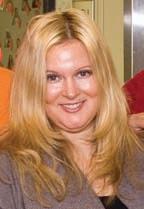
Wyche also works with Emory faculty and staff to prevent compassion fatigue. “If someone constantly loses things and people and doesn’t deal with the losses emotionally, they can burn out.”
WEB CONNECTION For more information on Emory’s transplant programs, visit emoryhealthcare.org/transplant-center, or call 404-712-4621.
Summer 2010 19
The skinny on cardiac fat
“Doctor, does this Ct scan make my heart look fat?”
If the answer is yes, you may be a candidate for a nuclear stress test, which indicates how well the heart works during physical activity and at rest.
A recent study shows that patients with more epicardial adipose tissue, that is, a layer of fat around the heart, tend to have the types of atherosclerotic plaques that cardiologists deem most dangerous. These plaques fall into the non-calcified category.
Fortunately, this type of heart fat tissue can be measured by imaging techniques such as CT or MRI. Imaging this tissue provides the cardiologist with more information than standard diagnostic techniques, such as coronary calcium scoring, according to recent research by Emory cardiologists.
“This information may be used as a gatekeeper in that it could help a cardiologist decide whether a patient should go on to have a nuclear stress test,” says Emory radiologist Paolo Raggi.
Here’s why. Calcium, says Raggi, tends to build up in atherosclerotic plaques. And although the heart’s overall coronary calcium burden is a good predictor of heart disease, calcium in an individual plaque doesn’t necessarily spell imminent trouble, he says.
Instead, researchers are learning that the non-calcified plaques are the ones that indicate active buildup in the coronary artery.
What’s more, studies show that fat around the heart secretes more inflammatory hormones than the fat just under the skin. Release of inflammatory factors from this tissue may be promoting an active atherosclerotic process and indicate the presence of the non-calicifed variety of plaque that causes trouble, says Raggi.
Emory researchers also have found that the volume of fatty heart tissue was a better indicator of ischemia (inadequate blood flow to the heart), than a coronary calcium score. A coronary calcium score indicates the presence, location, and extent of calcified plaque in coronary arteries.

In a separate study, researchers measured epicardial fat in patients already receiving a nuclear stress test. These patients had chest pain but were not known to have cardiovascular disease. A nuclear stress test picks up signs of inducible ischemia. The researchers found the presence of ischemia correlated more closely with epicardial adipose tissue volume than with the coronary calcium score. Robin
Tricoles
WEB CONNECTION For more info about healthy hearts or to make an appointment with an Emory cardiologist, please visit emoryhealthcare.org/connecting/healthconnection.html or call 404-778-5770.
Blogging for hearts
If you’re interested in anything to do with hearts, chances are that the new Emory heart blog, Advancing your Health, will cover it. And if not, you can suggest your topic to the cardiac surgeons and cardiologists who are blogging. So far, the blog has featured patient stories, ventricular-assist devices, and heart failure. To learn more, visit advancingyourhealth.org/heartblog/.

Cl INICA l C AR e F or PAtient S A n D re F errin G P hy S ici A n S emory he A lth 20
Slowing Alzheimer’s before symptoms appear

ties participating in a nationwide study testing the effectiveness of an experimental medication, CERE-110. The phase 2 study is the first gene therapy clinical trial for Alzheimer’s. It seeks to prevent or slow the death of brain cells in Alzheimer’s patients by delivering a protein known as nerve growth factor (NGF) directly to the affected area of the brain.
The Emory researchers also are trying to intervene with Alzheimer’s before symptoms appear. The course of Alzheimer’s typically spans 30 years. By the time the first mild symptoms of memory loss appear, the disease already has been wreaking havoc in the brain for about 20 years. Catching the disease earlier would give treatments a better chance.
the treatments now available for alzheimer’s disease are like Band-aids, says Emory neurologist James lah. They treat the symptoms but not the underlying pathology. At best, they slow Alzheimer’s progression by only six months.
But Lah and his colleagues in the Emory Alzheimer’s Disease Research Center (ADRC) are working to change that. The center, recipient of the National Institute on Aging’s ADRC designation and $8 million in funding, is the only such center in Georgia and one of only 30 in the nation.
For Georgia patients, that means access to clinical trials in Alzheimer’s that are showing promise in delaying onset of the disease. Lah leads the clinical core of Emory’s ADRC, which recruits participants and provides data on patients with Alzheimer’s and other memory problems, as well as healthy people in control groups, to facilitate research.
For example, Emory is one of 12 universi-
NGF nourishes a specific population of brain cells that deteriorate in Alzheimer’s. These cells produce a chemical, acetylcholine, which plays a vital role in memory and cognitive function. If NGF can keep these cells alive and healthy, then levels of acetylcholine won’t drop as dramati-
To that end, Lah has developed an inexpensive screening test for mild cognitive impairment (MCI), often the earliest stage of the disease. Traditional screening tests take up to 60 minutes to complete, but this test is brief, consisting of a three-minute cognitive screening test and a functional activities questionnaire that is filled out by someone close to the patient. The test so far picks up MCI from 80% to 85% of the time and MCI plus undiagnosed dementia closer to 95% of the time. It the test holds up through validation, it will be an inexpensive, quick tool for physicians to use to screen for early stages of memory loss.
Such interventions and tools can’t come soon enough. More than 5 million Americans have Alzheimer’s. With the great wave of baby boomers approaching the Alzheimer’s prone years, Levey expects a tsunami of new cases—up to 115 million worldwide by 2050
cally, leaving memory and cognition intact.
While current therapies try to stop the chemical breakdown of acetylcholine, CERE110 holds the promise of keeping the cells that make the chemical healthy. “This is one of the most exciting first steps to rescue brain cells that we know are important in memory and thinking and that deteriorate in Alzheimer’s,” says neurologist Allan Levey, who directs the Emory ADRC
“To tackle the epidemic that is coming down the road, early detection is critical,” says Levey. “A simple, quick screen would be a big advantage and could identify Alzheimer’s earlier when treatments are more likely to be effective.” Martha McKenzie
Summer 2010 21
W I t H t HE GRE at Wav E O f B a B y BOOMERS a PPRO a CHI n G t HE a lz HEIMER ’ S PRO n E y E a RS , lE v E y E x PEC t S a t S una MI O f n EW C a SES —u P t O 115 MI ll IO n WOR l DWIDE B y 2050 .
emoryhealthcare.org/
WEB CONNECTION For more information about the Emory ADRC and clinical trials, contact 404-728-6950. To schedule an appointment with an Emory neurologist, call 404-778-7777 or visit
connecting/healthconnection.html.
Health and the environment: push and pull in China

Economic growth has pulled millions of people in China out of extreme poverty. But the country faces enormous environmental challenges that threaten the health of its people.
Air pollution in China— from industries, vehicles, construction, and indoor sources such as burning coal and wood—leads to more than 800,000 premature deaths per year from respiratory and other diseases. Meanwhile, more than half of China’s large rural population relies on unsafe drinking water sources, and only half have access to basic sanitation.
Removing
At the same time, the Chinese population has migrated from rural to urban areas in record numbers—some 422 million from 1978 to 2007—trading old environmental risks for new ones. Rural migrants leave behind traditional problems such as unsafe drinking water and indoor air pollution caused by burning coal for cooking. But these gains are offset by new risks, such as outdoor air pollution from vehicle exhaust and industrial accidents.
Compounding those issues is a steep rise in greenhouse gas emissions that have driven China’s economic growth but also contributes to global climate change.
A March 27, 2010, review in The Lancet reports on the scope of China’s large-scale, long-term environmental risks. China needs fundamental efforts at the national policy level—building legal, regulatory, and compliance capacities—rather than short-term, uncoordinated individual solutions, says Justin Remais, who led the study and is a China scholar and expert on waterborne diseases at Emory’s Rollins School of Public Health.
The Lancet review pointed out the need to target environmental interventions to address China’s growing health inequalities. Environmental solutions should be designed to disproportionately benefit the poor, says Remais. “Every unit of intervention generally has a larger effect if it reaches a poor household rather than an affluent household.” For example, investments in rural water, sanitation programs, and subsidies for high-quality, clean-burning stoves that prevent indoor smoke from coal and wood fuels are high-priority places to start.
Remais remains hopeful that China can make significant and lasting headway against its environmental challenges. When there is political will by the Chinese government, we’ve seen dramatic change for the better, he says.
For example, during the Beijing Olympics, China enacted extraordinary pollution-control measures. Among them, the government eliminated half of all cars from roadways in Beijing by alternating driving days for vehicles with even and odd license plate numbers. Removing 1.5 million cars from the roads worked: key air pollutants dropped by half, and all of Beijing’s population, including the Olympic athletes, benefited from the improved air quality.
While compiling the review, Remais and his colleagues (from Rutgers, Princeton, Peking University, Harvard, and Ohio State) found a paucity of reliable data on environmental risks in China. To remedy the information gap, the group is now taking on more detailed analyses of the health risks from waterborne pathogens, industrial pollution, and climate change.
Reliable data is essential to influencing policymakers, and influencing policymakers lies at the heart of whether China will succeed in overcoming its enormous environmental challenges. Currently, Emory public health students are contributing by gathering data on the environmental drivers of parasitic diseases, developing models to predict environmental quality under future climate conditions, and evaluating the benefits of sanitation systems that could have a global impact. These “biogas systems” collect and treat household waste in a septic tank where methane gas is generated through anaerobic digestion. Households then capture the methane to use as cooking fuel for stoves, replacing wood and coal with a clean-burning, renewable fuel, improving indoor air quality, and reducing emissions of greenhouse gases.
“That’s an example of a structural environmental solution with benefits at all levels, from the household to the community to the global population,” says Remais. Rhonda Mullen
m ovin G For WA r D M OR e N e WS emory he A lth 22
1.5 million cars from the roads worked during the Olympics: key air pollutants dropped by half, and all of Beijing’s population, including the Olympic athletes, benefited from the improved air quality.
Greening health care
At a recent health care conference on sustainability, Greening Health Care, many participants expressed frustration. While they regularly followed energy conservation practices at home, (choosing to recycle, buy local, drive energy-efficient cars), they were unable to do the same on the job. In the hospitals and clinics where they worked, they too often saw wasted food, Styrofoam cups stacked by coffee pots, and few, if any, recycling bins for paper.
“As health care providers, we should teach by example,” says Maeve howett, a faculty member at emory’s Nell hodgson Woodruff School of Nursing who organized the conference. “We want to use the weight of our profession to put some energy into protecting the environment and sustainability.”
Other like-minded health care professionals and students from across Atlanta gathered at the March conference at emory to discuss how to raise awareness for sustainability in health care. they shared suggestions and
The cancer prevention diet
programs from their own workplaces. For example, Children’s healthcare of Atlanta has replaced automatic delivery of generic food trays to patients’ rooms with an individual ordering system that allows patients to custom order only the food they want from a menu. the practice has dramatically reduced food waste. As another example, emory healthcare has implemented a “Go Green” campaign to encourage the three R’s—reduce, reuse, and recycle. that includes a sharps recycling program for used needles.
“We want to spread the word beyond emory and create a dialogue about energy use across Atlanta,” says howett, whose sister Ciannat howett is emory’s director of sustainability and was a conference speaker. Other participants included nurses, facility administrators, dieticians, and nutritionists from emory, Children’s, Georgia tech, Georgia State, and other local organizations.
While other parts of the country support strong sustainability efforts within the health
care profession, there has been little activity in the Southeast—until now, says howett. For example, the Maryland chapter of the American Nursing Association has a large environmental working group, and grassroots environmental concerns at the university of Maryland and Johns hopkins led to the founding of a nonprofit organization, health Care Without harm (one of the sponsors of the conference at emory).
howett hopes this first conference will lead to more lessons on sustainability being worked into the curricula for health students. Already it is creating a growing network of health care professionals who promote environmental initiatives in the workplace.
“ the big things such as climate change can make us feel powerless to do anything,” howett says, “but we can make a difference with the small things by doing the best we can. every decision we make has a trickle effect.”
For starters, organizers made sure its event was green throughout. they conducted registration and publicity entirely online, used local and organic food for refreshments, and composted and recycled food service waste. Conference planners chose not to increase the carbon footprint by flying in speakers from out of town. In fact, their careful planning allowed them to return more than $850 of their grant. —Rhonda
Mullen
Only in the past several years have we learned that an overabundance of dietary phosphate in animals and people can prove life-threatening. A recent Emory study suggests that high intakes of phosphate in the diet encourage tumor development in animals in the presence of a carcinogen, whereas restriction of phosphate intake may help prevent cancer.

The researchers applied a carcinogen found in cigarette smoke to the skin of mice, followed by another chemical that stimulates cell growth. They then fed the mice a high-phosphate diet. The result: the mice on the phosphate-intensive diet experienced a 50% increase in skin papilloma, the initial stage of skin cancer, compared with mice on a low-phosphate diet.

Emory endocrinologist George Beck Jr. calculates that the human dietary equivalent of a mouse’s high-phosphate diet used in the study is 1,800 milligrams per day, an intake level that many adults in the united States match or exceed. “It’s quite possible that a low-phosphate diet may help prevent cancer,” says Beck.
Robin Tricoles
Summer 2010 23
Therapy in a tomato plant




In his hospital scrubs in the late afternoon sun, Kirk Hines (right) bags a small orchid, telling a customer she’ll need to replant it in orchid mix when she gets home. to another, he offers a deal on a towering prickly cactus. “I was bleeding when I brought it out of the greenhouse, and I don’t want to take it back.”
today hines is a one-man salesman, cashier, and master gardener at the Wesley Woods hospital plant sale. he is also a registered horticultural therapist (one of only two in Atlanta and only 270 in the country), who founded horticultural therapy services at the geriatric and chronic care hospital in 1993 the plant sale to emory staff, held several times each year, raises money for soil and pots to help sustain the program.
Patients grow the plants in therapy sessions that improve fine motor skills, muscle tone, range of motion, strength, even peace of mind. hines considers the greenhouse, today abloom with pink and white orchids, as another clinical space.

In fact, here and in two courtyard gardens, a walking garden, and indoor growing spaces, he works with older people who have lost their motor skills, need help with strength or balance, or enjoy the relaxation that gardening brings. For those who are unable to enjoy the outdoor spaces, he brings light carts and planting stations inside or works with individuals at the bedside.
“We want our patients to be successful,” says hines. “Gardening draws on long-term memory for many of them. While they are planting tomato seeds or digging in the dirt, it takes away the anxiety they feel away from home. they don’t feel like they are in a hospital environment.”
the two courtyards are designed as healing gardens. there are handrails to prevent falls and provide support. the walkways use surfaces that prevent glare. Shady seating areas are scattered around the lush space for an older population that is particularly sensitive to temperature. b oth courtyards have
burbling fountains, one with large, brightly colored goldfish that swim around a bald cypress that hines is growing to train—when the time is right—into a miniature bonsai.
In the walking garden around the greenhouse, surfaces covered with a variety of concrete, stone, and other natural pavers allow hines to work with patients on gait training. those trying to regain mobility can practice on surfaces that more resemble the ones they will encounter in real life rather than the polished floors of the traditional therapy unit. “We are able to get more out of patients in the garden setting,” says hines. “ they tend to work harder and longer.”
Of all the gardening spaces, the Wesley Woods legacy Garden is a showpiece for sensory stimulation. A local artist designed an arbor complete with a swing and draped with evergreen clematis. Wild grasses sway in the breeze. blueberries call to be tasted, fuzzy lamb’s ear to be touched. the garden, orderly but informal, extends naturally into the 64 acres of old growth, protected forest and wetlands that make up the campus.
these spaces, however, didn’t just spring































up overnight or without effort. It has taken hines—piecing together grants, donations, and volunteers—17 years to bring the areas into full bloom. A university of Georgia master’s student designed plans for the courtyard for dementia patients. eagle scouts have built raised beds and composting units. the Southeastern horticultural Society supported installation of the legacy Garden. local landscapers have pitched in with materials, and community volunteers have helped plant, water, and weed. One family so appreciated the care their grandmother received in the horticultural therapy program that it donated and planted 300 daffodils—pseudo narcissus to be exact—on the grounds in her honor.
Still, as beautiful as the gardens are, their purpose extends well beyond aesthetic enjoyment. “everything here exists for the patients,” hines says. “We prepare the materials for patients to use to get better. tden helps them get in tune with the seasons and the cycle of life, from which they are so often removed in the hospital. It brings about orientation and contact with life. It is a small thing on the way to recovery.”
When patients are discharged, they usually take the favorite plants they have grown in horticultural therapy with them. When they come back to campus for outpatient visits, they sometimes see hines in the halls, and they like to stop and talk. they want to let him know how their plants are doing.
 Mullen
Mullen
m ovin G For WA r D M OR e Ne WS 24 emory he A
lth
p
c
w
—Rhonda
A
green opportunity: Emory University Hospital is now planning a healing garden for the neuro ICU. For more information about that project or to make a gift, contact Ellen Sacchi, senior director of development for Emory Hospitals, esacchi@ emory.edu, 404-712-4152.
hoto
harlotte
atts
Unintentional poisoning
Anne Riederer, a researcher in Emory’s Rollins School of Public Health, studies the effects of pesticides and other chemicals on the environment. Currently, she is heading a study in thailand to assess pesticide exposure by testing levels that are found in breast milk. the participants are women in Chiang Mai, a rural area in the northwestern corner of thailand dotted by citrus farms. Farmers typically spray citrus crops with pesticides 20 to 30 times a year, and many women work on these farms, even during pregnancy.
While thailand does have some regulations for pesticide use, they are not strictly enforced, says Riederer. take, for example, the use of acutely toxic organosphosphate pesticide. In the united States, many organophosphates can be used only by farmers and workers who are certified on proper handling, which calls for, among other preventive measures, the wearing of protective clothing. In thailand, such requirements are absent, or they are followed inconsistently.
As a result, accidental pesticide poisoning is common. Doctors at Fang hospital, a government-run facility in Chiang Mai, report see-
Does living up north cause children’s vitamin D levels to head south? and what about children living below the Mason-Dixon line? Do they get enough vitamin D?
Researchers are reporting a resurgence in vitamin D deficiency among children throughout the United States but especially among black children living in northern latitudes. So Emory pediatrician Conrad Cole and his colleagues wanted to find out if black and Hispanic children living in the Southeast were also coming up short on this important micronutrient.


What Cole and his colleagues found was that nearly a quarter of low-income, minority children, especially those younger than 3, were deficient in vitamin D. However, those children tested during the spring and summer seasons were less likely to be
ing cases of pesticide poisoning regularly.
Riederer hopes to develop a better method for measuring the newer generation of pesticides in breast milk. Currently, individual tests must be given for each of four classes of pesticides. the goal is to develop one test that would work for all four classes.
If pesticides are found in breast milk, Riederer plans to expand the study to include infants to see how they are exposed, through diet or the environment. —Kay torrance
deficient than children tested during winter and fall. What’s more, a larger proportion of black children than Hispanic children were deficient in the vitamin. Researchers attribute this difference in part to a greater intake of D-fortified milk by Hispanic children.
Got vitamin D?
For all children, a lack of vitamin D is associated with increased lifetime risk for developing illnesses including diabetes, cancer, cardiovascular disease, and rickets (the failure of bones to mineralize and thus harden). The good news is that humans need only tiny amounts of micronutrients to thrive.
“The majority of the necessary vitamin D comes from
exposure to sunlight,” says Cole. “Dietary intake alone is unlikely to provide the daily recommended amount of vitamin D needed to prevent deficiency. However, micronutrient deficiencies are not something you see immediately. If you don’t test for it, you don’t know there’s a deficiency until it’s overt.”
By the time the signs of a deficiency become obvious, damage has already been done, and some of this damage is irreversible. That is, brain growth and neural development have been compromised, and so has the immune system. “If children are chronically impaired, even if the deficit is reversed, that doesn’t correct all of the issues,” says Cole.
Because so little vitamin D is needed, deficiencies can be avoided early on by combining diet choices with safe exposure to the sun.
Robin Tricoles
Summer 2010 25
[ ]
p hoto illustration wendy darling
WEB CONNECTION To see a video about the study, visit whsc.emory. edu/r_breastmilk.html.
Out of the woods
Depression in older people is often hidden in a dark thicket of other diseases. But with efforts between neurology and psychiatry at Emory, it is being found—and treated.

emory he A lth 26 Fir S t P er S on Gue S t CO lu MN
b y William McDonald • Illustration by Brian Stauffer
TwEnTy yEars agO, Emory neurologist Mahlon DeLong began investigating a neurosurgical procedure, pallidotomy, that dramatically reduced the tremors and rigidity in many patients with Parkinson’s disease. Pallidotomy maps, then destroys, cells in the region of the brain that control involuntary movements. Surprisingly, however, some of the patients with the most dramatic improvement in physical symptoms after pallidotomy did not describe themselves as improved. They did not feel any better. They continued to experience the same dark mood and sense of hopelessness they had before the procedure, a depression that their families and doctors may have assumed would go away when the physical symptoms improved. By contrast, patients with Parkinson’s but no depression (and a few with it) reported much more satisfaction after pallidotomy, even when their results were less impressive.
before or after pallidotomy was not correlated with the severity of their motor problems. We began to suspect that the depression was not just a reaction to increasing debility or pain but more likely had an organic basis, something to do with which cells in the brain were affected by Parkinson’s.
As a practical matter, we realized we should screen for depression and other psychiatric disorders (now done routinely before transplantation and certain other surgeries) and that we should treat those disorders before pallidotomy.
Today deep brain stimulation (DBS) largely replaces pallidotomy for treating the symptoms of Parkinson’s. It involves surgical implantation of a stimulating electrode. Patients can receive the same benefit as pallidotomy for their motor symptoms while no cells are destroyed. The procedure, therefore, is potentially reversible. Interestingly, when used to treat the tremor of Parkinson’s, DBS may cause psychiatric symptoms, including suicidal thoughts. But when the stimulator is placed in a different part of the brain that controls emotions and not movement, DBS can relieve depression. Currently, Helen Mayberg in our department and Bob Gross in
occurrence and significance of psychiatric symptoms in severe forms of dystonia.
That says a lot about the complex relationship between neurologic and psychiatric problems and how untreated depression can affect, even counteract, the treatment of other diseases.
When I arrived at Emory in 1993, neurology and psychiatry began working more closely together to understand what was happening with these puzzling patients and how we could improve outcomes. We knew that two of every five patients with Parkinson’s, or 40%, also had depression. We discovered that the level of depression patients suffered

neurosurgery are studying the potential benefits of DBS on treatment-resistant depression.
In collaboration with neurology, we also are studying depression and anxiety in other common neurologic movement disorders such as dystonia. Dystonia causes muscles to contract and spasm involuntarily. A mild form of the disorder is the common “writer’s cramp” whereas more severe forms result in twisting, repetitive movement, and distorted posture. Under the leadership of neurologist H.A. Jinah, I am working with a group of international researchers to investigate the
The basic interrelationship between depression and other neurologic disorders is also true for conditions that are unrelated to movement, such as the dementias. Treating depression and anxiety in patients with memory and cognition problems—including Alzheimer’s disease—enhances the patient’s quality of life, independence, and the ability to think and communicate. Importantly, we also know that depression in Alzheimer’s may have the most profound effect on the caregiver, who often suffers more than the patient. Much of the clinical work in the Fuqua Center focuses on the caregiver burden, addressing the needs of both the patient and the patient’s family.
Emory’s clinical departments of neurology and psychiatry are teaming up to address the complex overlap between neurologic and psychiatric problems. Together, they are developing a shared clinical program in which all patients with complex neurologic or psychiatric symptoms undergo a two-day neurologic, psychiatric, and neuropsychologic assessment. The health care team then compares
Summer 2010 27
William McDonald is the J.B. fuqua Professor for late-life Depression and director of geriatric psychiatry at Emory. for the past year, he has spent much of his time serving as the Georgia governor’s special adviser on mental health.
we began to suspect that the depression was not just a reaction to increasing debility or pain but more likely had an organic basis, something to do with which cells in the brain were affected by Parkinson’s.
notes on each patient’s condition and develops a treatment plan that assures all problems are addressed. This intensive, multidisciplinary approach makes for good clinical care.

Understanding the connections between neurologic and psychiatric symptoms also can teach us about depression in general and specifically about how late-life depression differs from that experienced at earlier stages. Sadness is the predominant sign of depression in younger people, from childhood to middle age, including postpartum depression. Older people, especially those who are experiencing depression for the first time, often report no sadness but rather a loss of interest, resulting in withdrawal and apathy. Because the symptoms may not seem like depression, it is harder to detect and treat.
As clinicians become increasingly better at sub-typing depression and understanding its familial, genetic, and biologic bases, we also are better able to understand depression’s role as a predictor of other diseases. In recent years, we have begun to understand that development of Parkinson’s begins silently and that manifestations like depres-


we have begun to understand that development of Parkinson’s begins silently and that manifestations like depression (and loss of smell) appear long before the motor symptoms for which Parkinson’s is best known.

go on to develop a dementia such as Alzheimer’s within three years of the onset of the depressive disorder. Emory psychiatrist Adriana Hermida currently studies patients who have late-life depression but no cognition problems to try to pinpoint early predictors. Other studies are under way in the Emory Alzheimer’s Disease Research Center. With neurology and psychiatry working hand in hand, Emory is trying to understand the relationships between neurologic and psychiatric symptoms—and in diagnosing and treating depression in older patients, with and without other diseases. We cannot do this alone, nor should we. In Georgia, as in the nation, the mental health system is inadequately equipped for what’s coming. Between 2000 and 2015, the older adult population in Georgia will double; by 2030, one of every five Atlantans will be over the age of 60. Many of today’s babyboomers, like their parents before them, will experience depression; anxiety; problems with cognition and memory; neurologic diseases like Parkinson’s, in which there is a high incidence of dementia and depression; and other psychiatric problems affecting their health, independence, families, and communities.
sion (and loss of smell) appear long before the motor symptoms for which Parkinson’s is best known. The percentage of Alzheimer’s patients with depression is also high ( 40%), and here too, depression may appear first. If a person develops depression late in life, especially for the first time, the majority will





These problems cannot be handled by psychiatric or other medical specialists alone. The effort instead will require coordinated community support, with programs in health care, social work, housing, transportation, and others working together. Fortunately, this is beginning to take place in Georgia, as we at Emory know firsthand from working with partners across the state to help elderly Georgians get the mental health services they need.
For more information visit fuquacenter.org/index.php
Advertise in Emory Health. You will reach an educated and affluent audience of 57,000 print and online readers (including emory donors and friends, visitors to our hospitals and clinics, community neighbors, employees of the Woodruff health Sciences Center, and emory health sciences alumni).
For more information and rates, visit whsc.emory.edu/advertising, phone 404-727-7146, or e-mail david. mcclurkin@emory.edu.
28 emory he A lth et C ete RA
to see your business here...
RediRecting natuRe Emory charts a new course for transplant medicine 2 Winter 2010 patient care, research, and education from Woodruff Healt ScienceS center Emory’s economic impact 10 An avenue out of abuse 16 Recession strategies 26 Voice over 10 What to do in case of heart attack 17 Considering the Suleman octuplets 26 Summer 2009 patient care, esearch, and education from the Woodruff HealtH ScienceS center A conversation we need to have 2 William Bornstein: Fir S t P er S on Gue S t CO lu MN
Woodruff Health Sciences c enter
o fficers
FreD SanFilippo, MD, pHD
executive VP for health Affairs, emory university
CeO, WhSC
CHarleS T. anDreWS Mpa
Senior Associate VP for Space Planning and Construction
SHari M. CaperS
Associate VP for health Sciences Strategic Planning
WrigHT CaugHMan, MD
VP for Clinical and Academic Integration
Director, the emory Clinic
DenniS W. CHoi, MD, pHD
VP for Academic health Affairs, WhSC
JoHn T. Fox, MBa
President and CeO, emory healthcare
gregorY H. JoneS, edD, MBa, MSC
Associate VP for health Affairs
Jane JorDan, JD
Deputy General Counsel/Chief health Counsel
ronnie l. JoWerS, MBa
VP for health Affairs and CFO, WhSC
JeFFreY p. Koplan, MD, MpH
VP for Global health
Director, emory Global health Institute
MargerY (Maggi) MCKaY
VP for Development, WhSC
JeFFreY MolTer
Associate VP for health Sciences Communications
DaviD S. STepHenS, MD
VP for Research, WhSC
garY l. Teal, MBa
Chief Administrative Officer, WhSC
JaMeS W. Wagner, phD
President, emory university
ask Helen
need an appointment for an Emory doctor quickly? Interested in registering for a prenatal class? Want to learn about cardiac Ct scans at Emory? Helen Smith can help you with that and more.
Smith is one of the 14 registered nurses who answer 16 phone lines at Emory Healthcare’s HealthConnection. A one-stop shop for patients and referring physicians, HealthConnection is available 7 a.m. to 7 p.m. each weekday. What would you like to know?
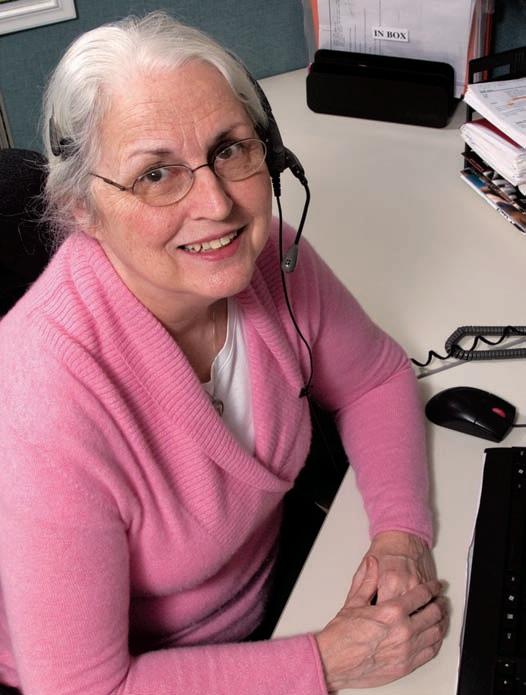
Emory HealthConnection, 404-778-7777 and 1-800-75EMORY
Emory University Hospital
Midtown HealthConnection, 404-778-2000
Wesley Woods Senior Resource Line, 404-778-7710 For physicians
Emory Consultation Line, 404-778-5050
Board of Trustees
M. DouglaS iveSTer, Chair
President, Deer Run Investments, llC
J. DaviD allen, DDS
Dr. David Allen & Associates
Consultants to the healthcare Industry
KaTHelen v. aMoS
President, the Aflac Foundation, Inc.
g linDSeY DaviS
bishop, united Methodist Church
ruSSell r FrenCH
Retired, Noro-Moseley Partners
CHarleS B. ginDen
Retired executive VP, Suntrust bank
roBerT C. goDDarD iii
Chairman and CeO, Goddard Investment Group,
llC
ruTH J. KaTz
Chief Public health Counsel
Committee on energy and Commerce
u.S. house of Representatives
WilliaM n. KelleY, MD
Professor university of Pennsylvania School of Medicine
CHarleS H. MCTier
trustee and Past President Robert W. Woodruff Foundation
JoHn g riCe
Vice Chairman of General electric
garY W. rollinS
CeO and President, Rollins, Inc.
WilliaM Warren iv MD
Founder and President, Good Samaritan health Center
Board of Directors
JoHn T. Fox
President and CeO, emory healthcare
FreD SanFilippo, MD, pHD
Chairman, emory healthcare
J. DaviD allen, DDS
Dr. David Allen & Associates
Consultants to the healthcare Industry
ellen a BaileY
Senior Principal Midtown Consulting
TiMoTHY BuCHMan, MD, pHD
Founding Director, emory Center for Critical Care
Professor of Surgery, emory School of Medicine
WrigHT CaugHMan, MD
VP for Clinical and Academic Integration
Director, the emory Clinic
norMan ellioTT, MD
Clinical Assistant Professor, Digestive Diseases
Atlanta Gastroenterology Associates
ruSSell r. FrenCH
Retired, Noro-Moseley Partners
CHarleS B. ginDen
Retired executive VP Suntrust bank
JoSepH glaDDen, JD
Retired executive VP and General Counsel
the Coca-Cola Company
JoHn T. glover, JD
Retired Vice Chairman, Post Properties, Inc.
roBerT C. goDDarD iii
Chairman and CeO
Goddard Investment Group, llC
luCKY Jain, MD, MbA
Medical Director, emory-Children’s Center
Professor and executive Vice Chairman
Department of Pediatrics
emory School of Medicine
CHriSTian p larSen, MD, pHD
Chair of Surgery
Director of emory transplant Center
emory School of Medicine
THoMaS J. laWleY, MD
Dean, emory School of Medicine
angel r leon, MD, FaCC
linton and June bishop Professor of Medicine
emory School of Medicine
Chief of Cardiology
emory university hospital Midtown
MiCHael ManDl
executive VP for Finance and Administration emory university
CarolYn MelTzer, MD
William P. timmie Professor
Chair of Radiology, Associate Dean for Research
emory School of Medicine
george D. overenD
President, Overend, llC
J. neal purCell
Retired partner, KPMG, llP
JoHn g riCe
Vice Chairman of General electric
SaM a. WilliaMS
President, Metro Atlanta Chamber of Commerce
WHS c chair
DenniS CHoi, VP for Academic health Affairs, WhSC, Director of the Comprehensive Neurosciences Center, and executive Director of the Neuroscience, human Nature, and Society Initiative, emory university
e x officio chair
roBerT goDDarD iii Chairman and CeO, Goddard Investment Group
m embership
CHarlie Craig, President, Georgia bio norMan ellioTT, MD, Clinical Assistant
Professor, Digestive Diseases, Atlanta Gastroenterology
laura HurT rn Director of Nursing Operations, emory university hospital Midtown luCKY Jain, MD, Professor of Pediatrics, emory
JeFF Koplan, MD, MpH, Vice President, Global health, and Director, Global health Institute, emory
JoHn SeFFrin, President and CeO, American Cancer Society
Claire STerK pHD, Senior Vice Provost/ Academic Affairs, emory university
WalKer raY, MD, retired pediatrician, former chair of the emory Alumni Association, member of Campaign emory School of Medicine Committee
Bill ToDD, President and CeO, Georgia Cancer Coalition
mory Healthcare e ditorial a dvisory Board
a complete listing of deans,
center
e
Emory Health | leadership For
department chairs, and
directors, see whsc.emory.edu/r_academic.html, whsc.emory.edu/home/r_chairs.html, and whsc.emory.edu/r_centers.html.
Emory University
Woodruff Health Sciences Center
1440 Clifton Road, 1st floor, 150M Atlanta, Georgia 30322
Address Service Requested
Have a plan.
Eva PowEll learned early the value of work. Growing up with 12 brothers and sisters on a Georgia farm, she became the only member of her family to graduate from college. She has raised four children, worked for 20 years at Georgia’s Fort Gordon military base, survived a stroke, and lost her husband to cancer.
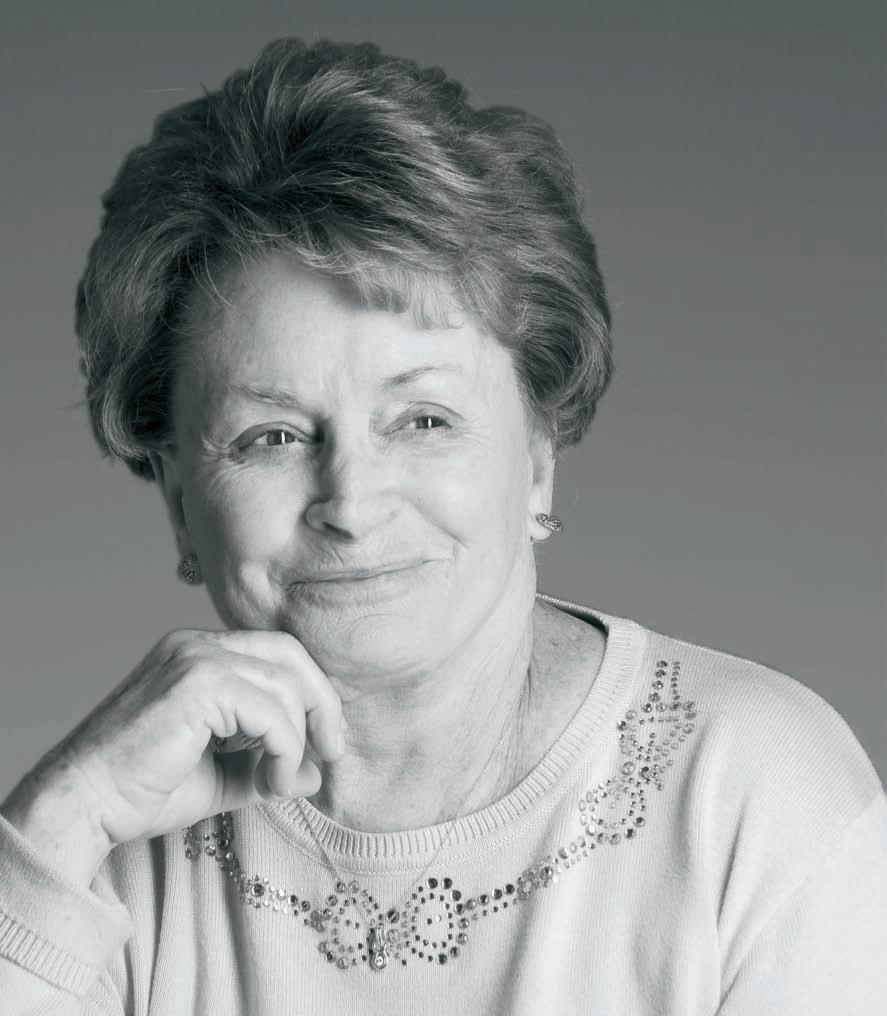
last year she decided to invest the money she’s saved over the years in eye research at Emory. at the suggestion of her eye doctor in augusta, she has made a bequest to the Emory Eye Center.
“I want my money to do something that will help a lot of people,” she says.
learn how you can support Emory health sciences with a planned gift, which can offer tax and income benefits. Call 404.727.8875 or visit www.emory.edu/giftplanning.
Plan to put your money to work.





















































 b
b







































 Mullen
Mullen












